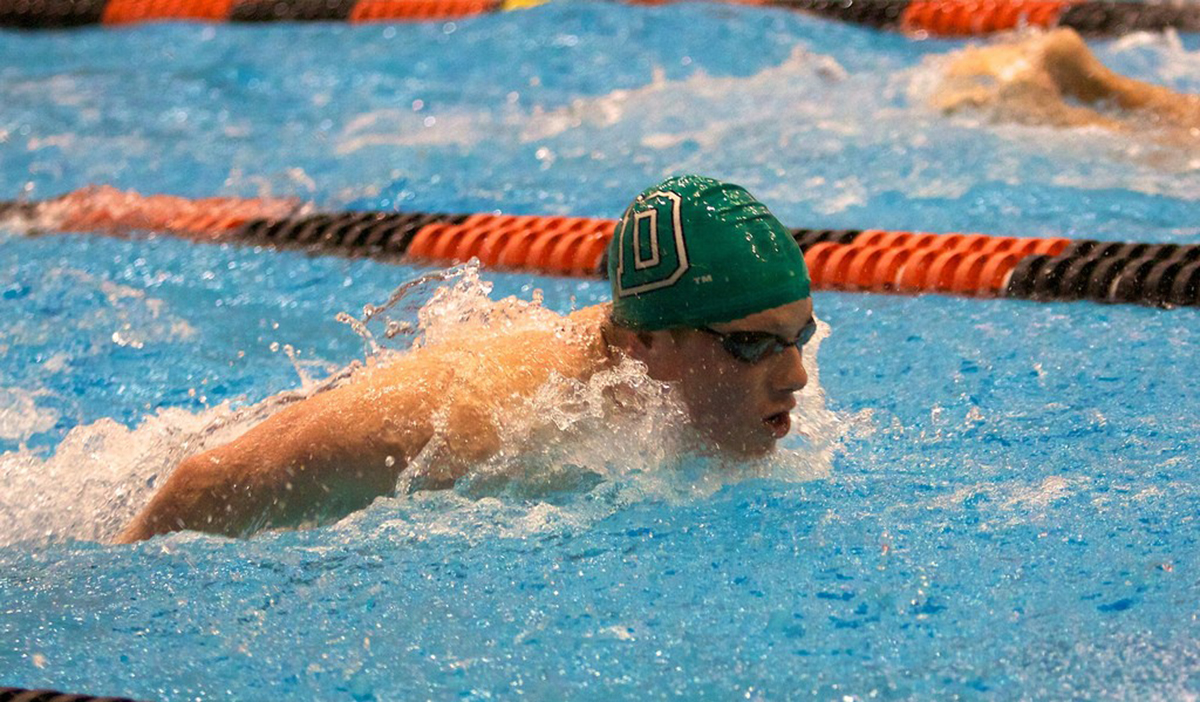Table of Contents
There are four main 'strokes' or styles of swimming. These are backstroke, breast stroke, front crawl and butterfly stroke.
Obviously, you do backstroke lying on your back. Breast stroke is the least athletically demanding stroke for most people and many people consider it to be the easiest to learn. Back stroke is very economical once learned. Butterfly stroke is the hardest and most athletic - and most impressive -stroke.

Here's how do do the four main strokes.
Backstroke
Backstroke is one lying on the back. While many of us have made up our own backstrokes, there is a 'proper' way of doing backstroke.
A true backstroke is done almost like rowing with one arm at a time: yo'u'll lift your arm overhead and make contact with the water with your arm almost straight, then pull the arm down through the water under you, bending it as you move so that it's at about 90 degrees when it passes under you.
With our legs, you'll 'flutter kick' - the sam small, repetitive movement of the whole eg from the hip that you use with front crawl.
Breast stroke
Breast stroke may be the slowest and least athletically demanding of the classic four swimming strokes, but you an still get a good workout doing it and it can be a strong and comfortable stroke for longer swims.
In stage one, you'll reach forward with your hands and arms. At the same time, you'll do your kick, a frog-like movement where you draw your legs up behind you and out, then extend them outward and bring them together - the sort of movement a frog makes when it jumps. Because breast stroke requires more hip flexibility than many people realize until they attempt it, it's possible to find this stroke the hardest apart from butterfly.
Stage two, you'll pull your arms down through the stroke. At this point your legs are straight out behind you. Sweep out your arms, pull them around and then push forward as you stretch out your body and begin your kick.
Alternate pulling and kicking, and when you're at the top of the stroke, when you pull your arms back, your face will naturally rise out of the water. At that point, you can take your breath. Some people swim a modified breast stroke in which the head never goes underwater, but this greatly reduces the power and efficiency of the stroke. It's better to learn to breath within your stroke.
Front Crawl
The front crawl is typically the fastest stroke.
You're 'paddling' yourself through the water, like a canoe, and your legs are only really doing enough work not to get in the way.
When you swim front crawl, you want your body almost all underwater, but your head should be relatively high. You're going to rock from side to side. Start the stroke by reaching forward with the leading arm, with the elbow higher than the forearm and the fingertips leading - the way the tip of a paddle would lead. Pull the arm down and along your body as the other arm rises out of the water. Because the crawl is a fast stroke done well, some people start off trying to do it fast, but if you try to do it well, speed will come. Your feet should kick from the hips with your feet and ankles relaxed and you should use six kicks to every arm pull.
Finally, a word about breathing: the crawl means you're face down in the water, so you breathe when your face comes sideways out of the water as you roll from side to side. It's best to breathe after an odd, rather than even, number of strokes, since otherwise you'll be breathing on the same side every time and this discourages good body rotation.
The butterfly stroke
Butterfly requires considerable flexibility, mobility, stability and strength - athleticism, in fact - in pretty much every area of the body. It's a tough stroke and most people will probably never do it, but if you decide to learn it the benefits are there.
We'll talk about the kick first. You make a 'dolphin' type motion through the whole length of your legs from your hips. It's referred to as the 'dolphin kick,' and it's unique to butterfly. The arm stroke is like two front crawls at once, and as such it takes a healthy shoulder girdle to do it without injury.
The breathing in butterfly stroke is done after a given number of strokes, often three, when the rhythm of pull and kick come together to drive your head and upper body out of the water.
Learning to swim is a lifetime's study in itself, but it's also something you can get competent at in just a few lessons, and from there you can take it anywhere with you.
See Also: Swimming And Contact Lens Safety
If you think I've hit the nail on the head - or if you think I've hit my thumb - why not get in touch through the comments section below?
- Mindmap by steadyhealth.com
- Photo courtesy of D Allen by Flickr : www.flickr.com/photos/97519517@N05/11498549915


Your thoughts on this